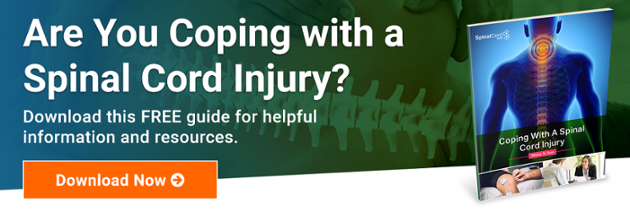Can the Damages from a Cervical Spinal Cord Injury Be Reversed?
While it’s true that no two spinal cord injuries (SCIs) are alike, it’s just as true that some injuries are more severe than others. Among the most traumatic SCIs are those that impact the cervical spine, or the topmost region of the spine that connects the skull with the thoracic spine. Sadly, these injuries may result in death.
For those who fortunately survive, many challenges can be faced as a result of their injuries and the bodily functions they impact. The cervical spine, which is divided into vertebral spine sections classified as C1-C7, enables a number of nervous system functions within the body.
Depending on their level of injury, people with cervical spinal cord injuries may experience:
- Inability to breathe or difficulty breathing without assistance;
- Paralysis in the legs, torso, and arms;
- Tingling, numbness, or loss of sensation in the body below the injury site;
- Impaired ability or inability to speak;
- Loss of bladder control and bowel function; and
- Inability to bathe or dress without assistance.
If you’re like most cervical SCI survivors, you want to know what kind of recovery you can expect.
Is it possible to reverse the damages from a cervical spinal cord injury? And, what sort of factors can impact your recovery?
Cervical SCI Damage Can’t be Reversed
Unfortunately, at this time, there is no “cure” for a cervical spinal cord injury or any way to outright reverse damages caused by one. However, that doesn’t mean that you can’t can’t regain some function. Many cervical SCI survivors attain some level of recovery through different types of treatment.
Later in this article, we’ll share the story of one cervical SCI survivor who has made incredible strides in her recovery.
Factors That Influence Spinal Cord Injury Recovery
Early Intervention
Early intervention is among the most important and shouldn’t be underestimated. Traumatic spinal cord injuries require immediate and comprehensive care to increase a person’s likelihood of survival and better long-term outcomes. Early intervention can include medical care received on the scene of an accident that causes the spinal cord injury, as well as the treatment received after arrival at the hospital.
If you or someone you know needs medical intervention, please contact us right away or use our live chat feature to speak to a specialist.
For example, some preclinical research shows that early surgical intervention in decompressing spinal cord injuries may improve neurological outcomes in more than 300 patients with acute cervical SCIs. Additionally, another study of nearly 4,000 SCI survivors who received rehabilitative treatment within an average of 19 days of their injuries found that “early rehabilitation was associated with better physical functioning when patients left the hospital and during the following year.”
Other Medical Treatments
In addition to surgery, patients may be eligible to receive steroid injections, which reduce inflammation around the injury site and can reduce pressure on the spinal cord. Some patients may even qualify to receive stem cell injections or participate in stem cell-related research.
There also have been promising results in the area of epidural stimulation therapy (EST). This treatment, which involves the implantation of a stimulator into the spinal cord, sends continuous electrical current at different frequencies to stimulate the spinal cord to activate its neural processes.
Physical and Occupational Therapies
Ongoing physical and occupational therapies are also important. They can play significant roles in the recovery of individuals with varying levels of spinal cord injuries, including those impacting the cervical spine.
Physical activities and exercise can help patients improve their quality of life by:
- Reducing pain;
- Decreasing depression and feelings of stress;
- Reducing muscle spasms;
- Helping them maintain a healthy weight or lose weight; and
- Decreasing secondary complications of their injuries (urinary tract infections, respiratory infections, pressure sores, etc.).
Choosing the Right Rehabilitation Center
Another significant impact on a person’s ability to recover from any level of spinal cord injury is their choice of a rehabilitation center. These centers offer a variety of early intervention and continued medical and therapeutic treatments and have radically altered the treatment SCI survivors receive. An added bonus is that the treatments offered at specialized centers also tend to decrease the amount of time SCI survivors spend for hospitalizations.
Activity-Based Therapy (ABT) also has helped those with spinal cord injuries. The therapeutic activity helps to improve a person’s strength after a traumatic injury and helps them to regain motor function. The SpinalCord.com has put together a list of ABT centers located around the U.S. for quick reference.
Example of a Successful Recovery
Dana Guest is one example of a cervical spinal cord injury survivor who has made an incredible recovery. Just before her senior year of highschool, Guest’s car was struck from behind by a mack truck traveling at 55 mph while she was sitting at a redlight. The accident totaled her vehicle and caused even worse damage to her body, resulting in a complete C6 spinal cord injury, rendering her quadriplegic.
Guest spent at least a year going through intense physical therapy. Guest has recovered virtually full function of her arms and hands. Hear more from Dana about her recovery and how she was able to receive compensation for her injuries.
While there is no way to simply reverse the damages of a cervical spinal cord injury, there may be ways to begin recovering some of the functions you have lost.
Stay Updated on Advancements On Traumatic Brain &
Spinal Cord Injuries
About the Author



.gif?width=568&height=190&name=ezgif.com-video-to-gif%20(1).gif)




